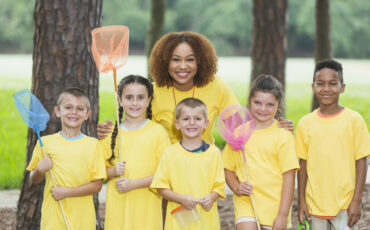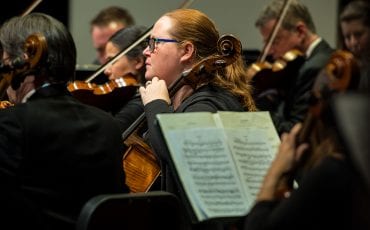How You Can Make a Difference

In Atlanta neighborhoods, we encounter diversity in our children’s classrooms, at the grocery store, at sports events and passing each other on busy streets. With recent events in Atlanta and across the nation, many parents are asking what they can do right now to go beyond merely living in diverse communities to planting a spirit of racial harmony in their children’s hearts. Here are tangible ways to teach justice and equality at home so kids can carry those values into the world.
Table of Contents
Look Within
Assess your own thoughts, words and actions. Change unjust thinking or speaking.
“Bias is often taught at home,” says Nicole Moore, Director of Education at the National Center for Civil and Human Rights in Atlanta. She suggests parents look for resources to help them work through their own biases but then work on racial harmony as a family.
“It’s not just about what we as parents can do for our kids, but what we can do as a family. It’s a collective effort and not just that the parents know everything. It’s a learning experience for everyone.”
Start the Conversation
It may be uncomfortable, and you may not know what to say, but it’s important to discuss racism with children. If your children have seen news clips or heard conversations about racism, social unrest or protests, start there.
“I do believe just starting the conversation is essential,” says Jill McManigal, the cofounder and executive director of Kids for Peace, a California-based global nonprofit. McManigal started the organization with her own two children and neighbors in 2006, during uncertainty and fear in the aftermath of the terrorist attacks of September 11, 2001.
“For parents to recognize their own vulnerabilities is powerful – kids appreciate it when parents say ‘I’m not really sure what to say, but I know we must talk about this because we can’t be silent.’”
Include Diversity in Entertainment
Start by including diverse characters in books and multicultural TV shows and movies in your family’s entertainment line up. However, Moore warns that it’s not enough to simply watch shows with a leading Black actor.
One way Moore digs deeper with her own family is by watching travel shows that celebrate the food, customs and culture of countries around the world.
“When you are watching these shows, you are going to different countries virtually and you become embedded in the culture,” Moore says. “Since you are watching from home you can pause, ask questions, go back, and take time to look things up. It’s a great way to see and explore the world. Finding those documentaries and shows are important so that you are hearing and learning what it is like to grow up in those places.”
Take Action
Attend a peaceful protest as a family, make your own yard sign, or commit to a pledge of peace as a family. A downloadable Peace Pledge on the Kids for Peace website includes several ways to be peaceful, including “I pledge to respect people in each and every land.” You can print pledges to share with your family and others, including your child’s teacher.
Donate to Museums and Educational Landmarks
One way to teach children about the history of civil rights is to donate to The National Center for Civil and Human Rights or the Martin Luther King Jr. National Historical Park. Both are closed right now due to the COVID-19 outbreak, but you can donate online. When they reopen, families can visit and explore places to which they have contributed financially.
Find Cultural Commonalities
Help your child identify common bonds across cultures in order to emphasize that we have more in common with others than we may realize. If your child plays a sport, research places it’s played across the globe.
“Kids are fascinated to understand how almost everywhere kids are doing the same kind of sport they are,” McManigal says. “As children focus on what they have in common, cultural barriers begin to fade away.”
Celebrate Black History Month All Year
Included on the Kids for Peace Facebook page is a post about an activity young virtual campers created called “19 for Juneteenth.” It lists 19 actionable ways to honor Black lives and liberation that can be done at any time, says McManigal.
“The idea behind that is we need to keep educating ourselves and stay engaged until there is racial justice and equality for all,” says McManigal.
Moore recommends teaching children about more than just the well-known heroes of the civil rights movement like Rosa Parks and Martin Luther King Jr. Children often connect to the civil rights stories of other children. As it’s age-appropriate, teach about Ruby Bridges, the Sixteenth Street Baptist Church Bombing in Birmingham and the “Freedom Writers” – the real-life teens who wrote journal entries that inspired the 2007 movie.
“Diverse voices matter,” Moore says. “When you get varying opinions and viewpoints it helps you create a bigger picture.”
Include Multicultural Toys
“Diversity in children’s playthings make them feel more natural interacting with other people with different skin and hair color,” McManigal says. Including toys in the home from different cultures all over the world will create familiarity with diverse backgrounds.
Partner with a Pen Pal
Good old-fashioned letter writing could be the key to opening your child’s mind to different cultures.
Kids for Peace has a form at their website where your child can sign up to correspond with a pen pal in the United States or in another country.
“We find that the more kids can extend themselves outside their immediate community, the more their appreciation for differences open up,” McManigal says. “It is helpful in creating a culture of inclusion and joyful connection with one another.”
Be Kind
Kindness has the power to be a universal unifying force. Kids for Peace has a program called The Great Kindness Challenge, which features a checklist of 50 acts of kindness and is available in both school and family editions.
According to McManigal, “Kindness is a great entry point for kids to reach out to people who seem different from them. It’s a really safe, powerful way for families to open their hearts and extend themselves.”
Moore says racial harmony becomes rooted in kids’ hearts when they see children who come from different cultural backgrounds, appreciate their differences and say “that’s my classmate – that’s my friend.”
Resources
- Kids for Peace: Includes Peace Pledge and The Great Kindness Challenge checklist downloads, along with information about joining or starting a chapter.
- EmbraceRace: Includes tools, resources and discussion spaces to help teach and talk about race.
- The Brown Bookshelf: Creates awareness of Black voices writing for young readers.
- Dr. Beverly Daniel Tatum: Dr. Beverly Daniel Tatum is the president emerita of Spelman College and author of the best-selling book, “Why Are All the Black Kids Sitting Together in the Cafeteria? And Other Conversations about Race.” Her website includes resources that will help parents as they talk about race with their children.
—Janeen Lewis







